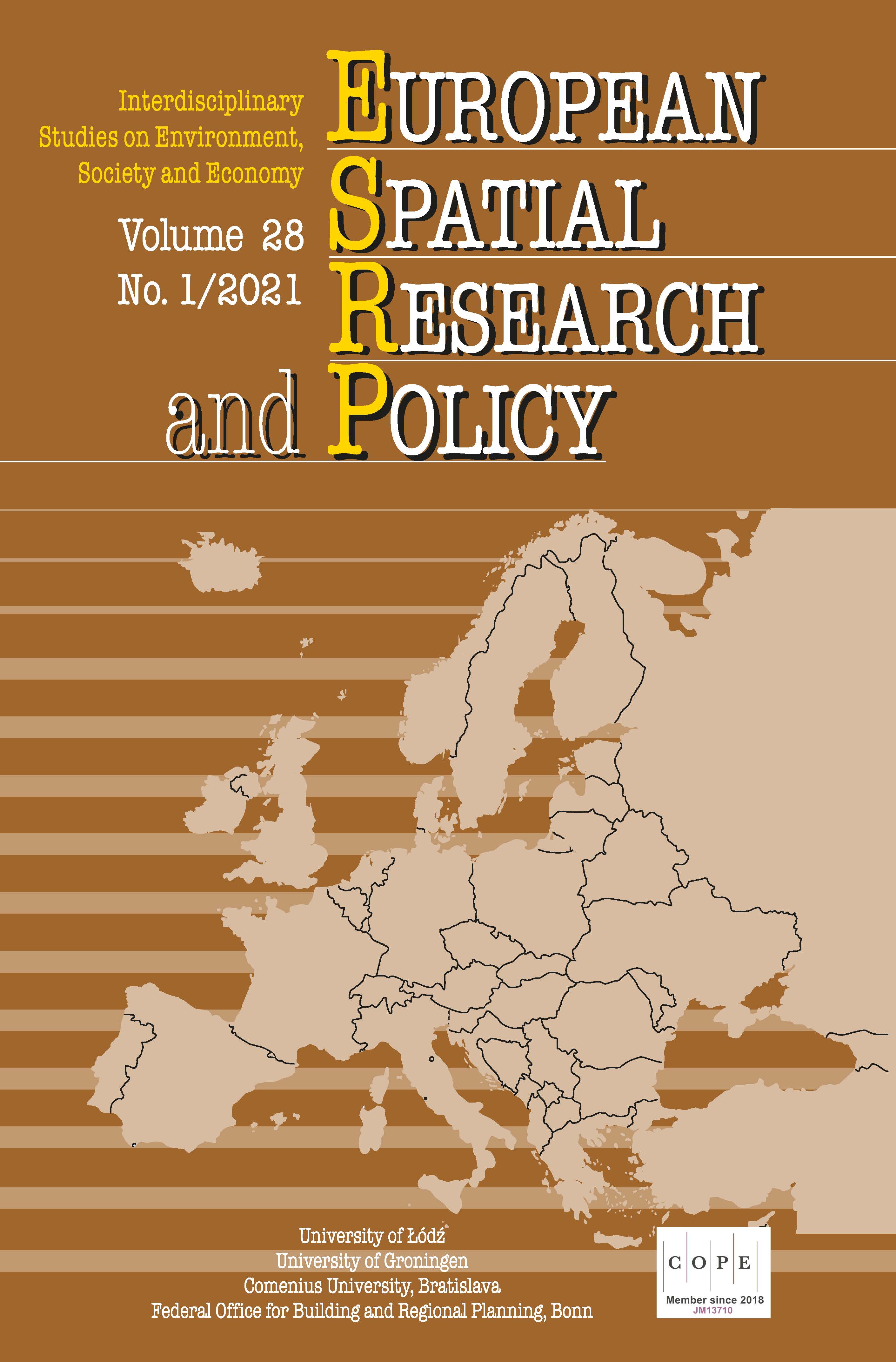The role of location in the functioning of a local currency: La Gonette case study
DOI:
https://doi.org/10.18778/1231-1952.28.1.17Keywords:
local complementary currencies, la Gonette, France, location featuresAbstract
The beginning of the 21st century was a proliferation of complementary currencies worldwide. Among them, a number of newly created local currencies were notable. France proved to be especially fertile in this regard from the early 2010s. La Gonette, operating in the metropolitan area of Lyon, is one of the biggest French local complementary currencies in terms of its users, providers (business partners), and money supply. For every scheme, the most important issue, which is also a challenge, is to provide enough spending options to be attractive for users, while also retaining their particular sociocultural identity. Besides a variety of spending options, their location features are also important in regards to future development, so decision-makers of a scheme can diversify the business expansion strategy accordingly in order to better achieve the desired socio-economic goals. Using la Gonette as a case study, the research objective of this paper is to uncover the implications of the providers’ location on the functioning of the scheme. To address this objective, I applied statistical tests for correspondence on the providers’ categorical and locational breakdowns. The results have shown heterogeneity in the spatial distribution of the types of providers in accordance with broader location characteristics, a fact which supports the need for territorial diversification of future development concepts.
Downloads
References
BALOUZAT, B. and SIMON, A. (2017), Ségrégation résidentielle par le revenu dans quatre grandes villes de la région : des quartiers souvent marqués socialement, INSEE, 30.
Google Scholar
BALOUZAT, B., GEYMOND, J. and BERTRAND, P. (2019), Quartiers de Lyon : de profondes mutations en 30 ans, avec une forte dynamique à l’est, INSEE, 83.
Google Scholar
BLANC, J. and FARE, M. (2013), ‘Understanding the Role of Governments and Administrations in the Implementation of Community and Complementary Currencies’, Annals of Public and Cooperative Economics, 1, pp. 63–81. https://doi.org/10.1111/apce.12003
Google Scholar
DOI: https://doi.org/10.1111/apce.12003
BLANC, J. and FARE, M. (2016), ‘Turning values concrete: the role and ways of business selection in local currency schemes’, Review of Social Economy, 74 (3), pp. 298–319. https://doi.org/10.1080/00346764.2016.1168035
Google Scholar
DOI: https://doi.org/10.1080/00346764.2016.1168035
BLANC, J. and FARE, M. (2018), ‘Contrasted cases. Successes and failures of local currency schemes in France since 2010’, International Journal of Community Currency Research, 22 (1), pp. 60–73.
Google Scholar
BLANC, J. and LAKOCAI, C. (2020), ‘Toward Spatial Analyses of Local Currencies: the case of France’, International Journal of Community Currency Research, 24 (1), pp. 11–29.
Google Scholar
BOUCHPAN, L., BERTRAND, P., RECOULY, Y. and LAGARDE, T. (2014), Grand Lyon : les défis environnementaux et humains d’une forte attractivité, INSEE, 226.
Google Scholar
COHEN, B. (2017), ‘The Rise of Alternative Currencies in Post-Capitalism’, Journal of Management Studies, 54 (5), pp. 739–746. https://doi.org/10.1111/joms.12245
Google Scholar
DOI: https://doi.org/10.1111/joms.12245
COLLOM, E. (2005), ‘Community currency in the United States: the social environments in which it emerges and survives’, Environment and Planning A, 37 (9), pp. 1565–1587. https://doi.org/10.1068/a37172
Google Scholar
DOI: https://doi.org/10.1068/a37172
DIDIER, R.(2020), Le profil socioéconomique des utilisateurs de monnaies locales en France. Le cas particulier du Florain à Nancy, Document de Travail [Working Paper] n° 2020 – 49, Bureau d’Économie Théorique et Appliquée.
Google Scholar
GÓMEZ, G. M. and HELMSING, A. H. J. (2007), ‘Selective Spatial Closure and Local Economic Development: What Do We Learn from the Argentine Local Currency Systems?’, World Development, 36 (11), pp. 2489–2511. https://doi.org/10.1016/j.worlddev.2007.11.015
Google Scholar
DOI: https://doi.org/10.1016/j.worlddev.2007.11.015
GUILLAUME, A. and LUNG, Y. (2019), Les Monnaies Locales complémentaires en Nouvelle-Aquitaine : un état des lieux, NOTE DE TRAVAIL MoLoNA n°1 – Novembre 2019, Maison des sciences de l’homme d’Aquitaine.
Google Scholar
JOHNSON, S. and HARVEY-WILSON, H. (2018), ‘Local currency adoption and use: insight from a realist evaluation of the Bristol Pound’, Bath Papers in Internation Development and Wellbeing, 56.
Google Scholar
KENNEDY, M., LIETAER, B. and ROGERS, J. (2012), People Money. The Promise of Regional Currencies, Axminster.
Google Scholar
LAHI, F. (2019), Rhȏne et Métropole de Lyon : deux territoires moteurs de l’emploi regional, INSEE, 62.
Google Scholar
MARCON, É. and PUECH, F. (2014), ‘Mesures de la concentration spatiale en espace continu: théorie et applications’, Économie et Statistique, 474, pp. 105–131. https://doi.org/10.3406/estat.2014.10514
Google Scholar
DOI: https://doi.org/10.3406/estat.2014.10514
MARSHALL, A. P. and O’NEILL, D. (2018), ‘The Bristol Pound: A Tool for Localisation?’, Ecological Economics, 146, pp. 273–281. https://doi.org/10.1016/j.ecolecon.2017.11.002
Google Scholar
DOI: https://doi.org/10.1016/j.ecolecon.2017.11.002
MAURY, S. and GILBERT, A. (2016), Les arrondissements de Lyon: de profondes mutations socio-économiques en 40 ans, INSEE, 29.
Google Scholar
NEILAGH, Z. M. and GHAFOURIAN, M. (2018), ‘Evaluation of Social Sustainability in Residential Neighborhoods’, European Journal of Sustainable Development, 7 (1), pp. 209–217. https://doi.org/10.14207/ejsd.2018.v7n1p209
Google Scholar
DOI: https://doi.org/10.14207/ejsd.2018.v7n1p209
New Economics Foundation (NEF) (2015), Money with a purpose. Community currencies achieving social, environmental and economic impact, http://b.3cdn.net/nefoundation/ff-0740cad32550d916_o1m6byac6.pdf
Google Scholar
ORTEGA-MOMTEQUIN, M., RUBIERA-MOROLLON, F. and PEREZ-GLADISH, M. (2021), ‘Ranking residential locations based on neighborhood sustainability and family profile’, International Journal of Sustainable Development & World Ecology, 28 (1), pp. 49–63.https://doi.org/10.1080/13504509.2020.1778581
Google Scholar
DOI: https://doi.org/10.1080/13504509.2020.1778581
REYNAUD, J-P. and SIMON, A. (2016), Lyon, une agglomeration de dimension européenne, INSEE, 23.
Google Scholar
RIVERO SANTOS, A. M. (2017), ‘Contributions of Social Currencies to Alternative Short Food Supply Chains’, Urban Agriculture & Regional Food Systems, 2 (1), pp. 1–15. https://doi.org/10.2134/urbanag2016.07.0005
Google Scholar
DOI: https://doi.org/10.2134/urbanag2016.07.0005
ROLLAND, L. (2014), ‘Commerce équitable et politiques urbaines de développement durable’, Géoconfluences. http://geoconfluences.ens-lyon.fr/informations-scientifiques/dossiers-thematiques/developpement-durable-approches-geographiques/articles-scientifiques/commerce-equitable-et-politiques-urbaines-de-developpement-durable
Google Scholar
SMIT, A. J. (2011), ‘The Influence of District Visual Quality on Location Decisions of Creative Entrepreneurs’, Journal of the American Planning Association, 77 (2), pp. 167–184. https://doi.org/10.1080/01944363.2011.567924
Google Scholar
DOI: https://doi.org/10.1080/01944363.2011.567924
TORRE, A. (2018), ‘Développement territorial et relations de proximité’, Revue d’Économie Régionale & Urbaine, 5–6, pp. 1043–1075. https://doi.org/10.3917/reru.185.1043
Google Scholar
DOI: https://doi.org/10.3917/reru.185.1043
YIGITCANLAR, T., KAMRUZZAMAN, Md. and TERIMAN S. (2015), ‘Neighborhood Sustainability Assessment: Evaluating Residential Development Sustainability in a Developing Country Context’, Sustainability, 7 (3), pp. 2570–2602. https://doi.org/10.3390/su7032570
Google Scholar
DOI: https://doi.org/10.3390/su7032570
Downloads
Published
How to Cite
Issue
Section
License

This work is licensed under a Creative Commons Attribution-NonCommercial-NoDerivatives 4.0 International License.














